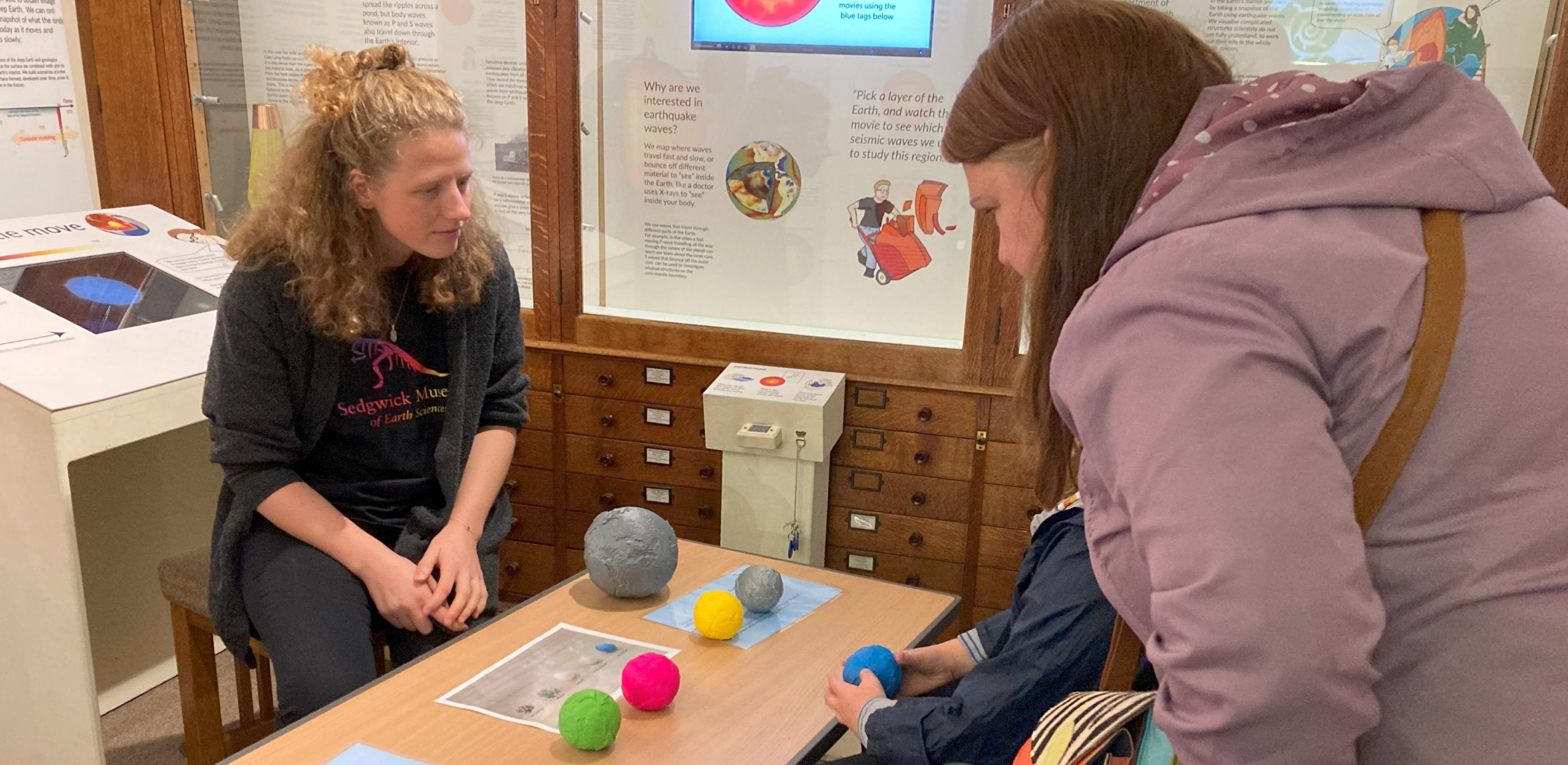
Submitted by Dr C.M. Martin-Jones on Wed, 18/10/2023 - 15:09
This half term, visitors to Cambridge’s Sedgwick Museum of Earth Sciences will get a chance to listen in on the mesmerising and eerie sounds of our planet. The family-friendly installation and activities are free and will run from the 24th October to the 4th November.
Conversations between whales in the oceans, the low throb of ships engines, bursts of vibrations excited by earthquakes. Earth is a noisy place, but these sounds are too low for humans to hear in their original frequencies.
Sound artist, David Stalling, and Cambridge seismologist, Sergei Lebedev, have converted these usually inaudible noises into captivating soundscapes in their new ‘Earth Traces’ installation at Cambridge’s Sedgwick Museum of Earth Sciences.
Earth Traces is an immersive audio experience – allowing visitors to hear, as well as visualize, the vibrations caused by seismic waves travelling through Earth interior and oceans. Running alongside the installation, there will be a range of complementary hands-on activities for families — including make your own mini earthquakes and slinky experiments.
Stalling and Lebedev used a technique called audification to speed up vibrations collected by seismometers positioned on land and on the seafloor of the North Atlantic Ocean. Scientists first tried using audification to hear earthquakes as early as in the 1960s. Working with seismologists, Stalling developed a new technique where he could turn the seismic traces into spatial surround sound. “It’s fascinating to hear the vibrations bouncing silently within the Earth and in the ocean brought to life,” said Lebedev.
Stalling said that his collaboration with Lebedev was motivated by a simple but enigmatic question – what does an earthquake sound like? “I don’t have a scientific background,” Stalling said, “I approach this from a composer’s perspective. But listening to the data has made the science much more accessible. These sounds have given me a glimpse into processes that I did not even imagine existed.”
Stalling and Lebedev will talk more about their experience of collaborating on the installation at a dedicated after-hours event at the Sedgwick Museum on the 27th October. Visitors will get a chance to meet them and experience the Museum in an atmospheric evening setting.
“Here in the Sedgwick Museum, we are all about enabling more people to explore and understand our amazing planet,” said Liz Hide, Director of the Sedgwick Museum. “David's sound installation is a new and really exciting way to experience some of the cutting-edge science that goes on in Cambridge. We're looking forward to welcoming visitors of all ages to Earth Traces, and hope it will inspire them to learn more.”
The Earth Traces installation and associated activities are all free and family-friendly. For details of the installation, see here. More details of the complementary family activities can be found here.
The after-hours event is also free, but booking is essential. Free tickets via Eventbrite here.
For Museum opening times, access information and enquiries please visit: https://sedgwickmuseum.cam.ac.uk/ or call 01223 333 456
